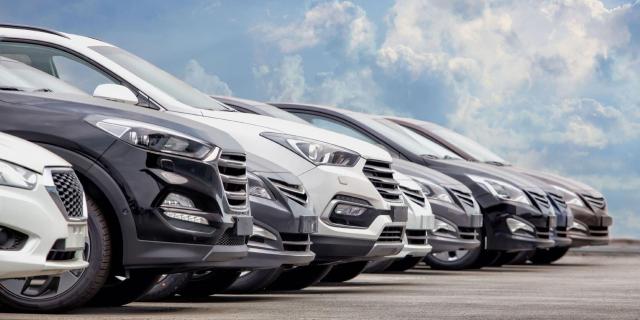Les véhicules utilitaires légers représentent un nombre disproportionné de véhicules dans les villes, où la réduction des émissions est une priorité absolue.
Les objectifs de RSE, le coût du carburant et les zones basses émissions constituent également de puissants facteurs de changement pour les gestionnaires de flottes LCV. Cette combinaison signifie que les LCV doivent rapidement être électriques.
Alors que les fabricants élargissent le choix de modèles et que les conducteurs expriment leur préférence pour la conduite de véhicules utilitaires électriques (ELCVs), les gestionnaires de flotte se retrouvent à faire des choix différents, en particulier pour leurs flottes urbaines.
L’ÉLECTRIFICATION DES VÉHICULES UTILITAIRES LÉGERS
L’électrification de l’industrie automobile ne peut évidemment pas passer à côté des véhicules utilitaires quotidiens : ceux qui livrent des marchandises, qui permettent de réaliser des réparations, de transporter des passagers et d’entretenir nos réseaux.
Le véhicule utilitaire léger est la colonne vertébrale de nos industries. Et il est de plus en plus souvent électrique.
Étant donné que les véhicules logistiques et de livraison représentent une proportion inégalée des véhicules en ville, il est très important pour les urbanistes de réduire leur empreinte carbone.
De même, les entreprises de nombreux secteurs sont intéressées par l’électrification des flottes d’utilitaires, en particulier celles qui poursuivent des objectifs de réduction du carbone. Il est presque impossible d’atteindre la neutralité carbone et les objectifs RSE d’une entreprise sans s’intéresser aux émissions des utilitaires.
C’est une question économique basique : les zones à faibles émissions, les zones calmes et les zones à péage ont fait augmenter le coût de la conduite dans certaines villes européennes. Grâce à leur temps de fonctionnement plus élevé, les utilitaires électriques sont souvent plus économiques à utiliser que leurs homologues conventionnels.
Depuis plus de dix ans, les gestionnaires de flottes européens recherchent des alternatives aux utilitaires diesel et essence. Les start-ups Modec et Smith Electric Vehicles, lancées en 2007, ont fait partie des premières à utiliser des utilitaires électriques. Cela fait plus de dix ans que les grands fabricants en perçoivent le potentiel : Ford a dévoilé son utilitaire électrique en 2010.
Cependant, étant donné la diversité d’utilisation des utilitaires, le faible éventail de rayons d’action a rendu la planification difficile pour les fabricants. Certains utilitaires peuvent parcourir 50 kilomètres un jour et 350 le lendemain.
De plus, le poids des batteries compromet la charge utile, en particulier pour les utilisateurs qui transportent des marchandises lourdes, comme des pièces de rechange, et qui dépendent de l’allègement de leurs véhicules.
Mais quand la rentabilité et le volume sont plus importants que la charge utile, par exemple pour les entreprises de logistique urbaine et de services, les utilitaires électriques se sont avérés être des compagnons idéaux. Avec des itinéraires clairement définis, une autonomie quotidienne bien gérée et des bornes de recharge disponibles aux dépôts, bon nombre de ces flottes ont déjà adopté des utilitaires 100 % électriques ou hybrides.
De plus, ceux dont l’opinion compte le plus, les conducteurs, estiment souvent qu’ils sont plus agréables à conduire. Et pour les techniciens et les livreurs, qui passent 8 à 12 heures par jour dans leurs véhicules, le confort est important.
Les utilitaires 100 % électriques ou hybrides conviennent à un nombre croissant de types de flottes. Aujourd’hui, tous les grands constructeurs fabriquent des utilitaires entièrement électriques proposés en plusieurs tailles, et certains fabriquent également des modèles hybrides. Qu’il s’agisse de microvans aménagés sur des voitures particulières ou de transformations de châssis de grande taille, il existe désormais des vans 100 % électriques avec une autonomie allant jusqu’à 360 km selon la procédure d’essai mondiale harmonisée pour les véhicules légers (WLTP).
L’étape suivante du développement des véhicules utilitaires est la construction de véhicules sur mesure dans des micro-usines. Tout comme certaines entreprises de logistique, qui ont toujours commandé des véhicules sur mesure, les opérateurs de VTC et de transports en commun pourront commander des utilitaires électriques adaptés à leur utilisation auprès d’entreprises comme Arrival.
Cependant, pour certaines entreprises, la meilleure alternative à l’utilitaire diesel ou électrique n’est peut-être pas du tout un utilitaire. Les vélos électriques, et en particulier les vélos cargo, sont devenus communs dans toute l’Europe.
Ils ne sont pas soumis aux péages des zones à faibles émissions, peuvent souvent utiliser des pistes cyclables, permettent de faire moins de détours en ville et leur capacité a considérablement augmenté.
De la dépose de quelques colis à l’échange et à la livraison de palettes entières, l’utilisation de tricycles électriques pour petits trajets peut avoir un impact important sur l’empreinte carbone d’une entreprise.
Enfin, comme le secteur commercial ne dépendra bientôt plus des moteurs thermiques, il faudra peut-être même réaffecter des conducteurs. Nous observons l’augmentation des livraisons électriques et autonomes sur tout le continent.
Vous voulez lire d'autres nouvelles d'Arval Mobility Observatory ?
Vous pouvez trouver leur newsroom ici.




